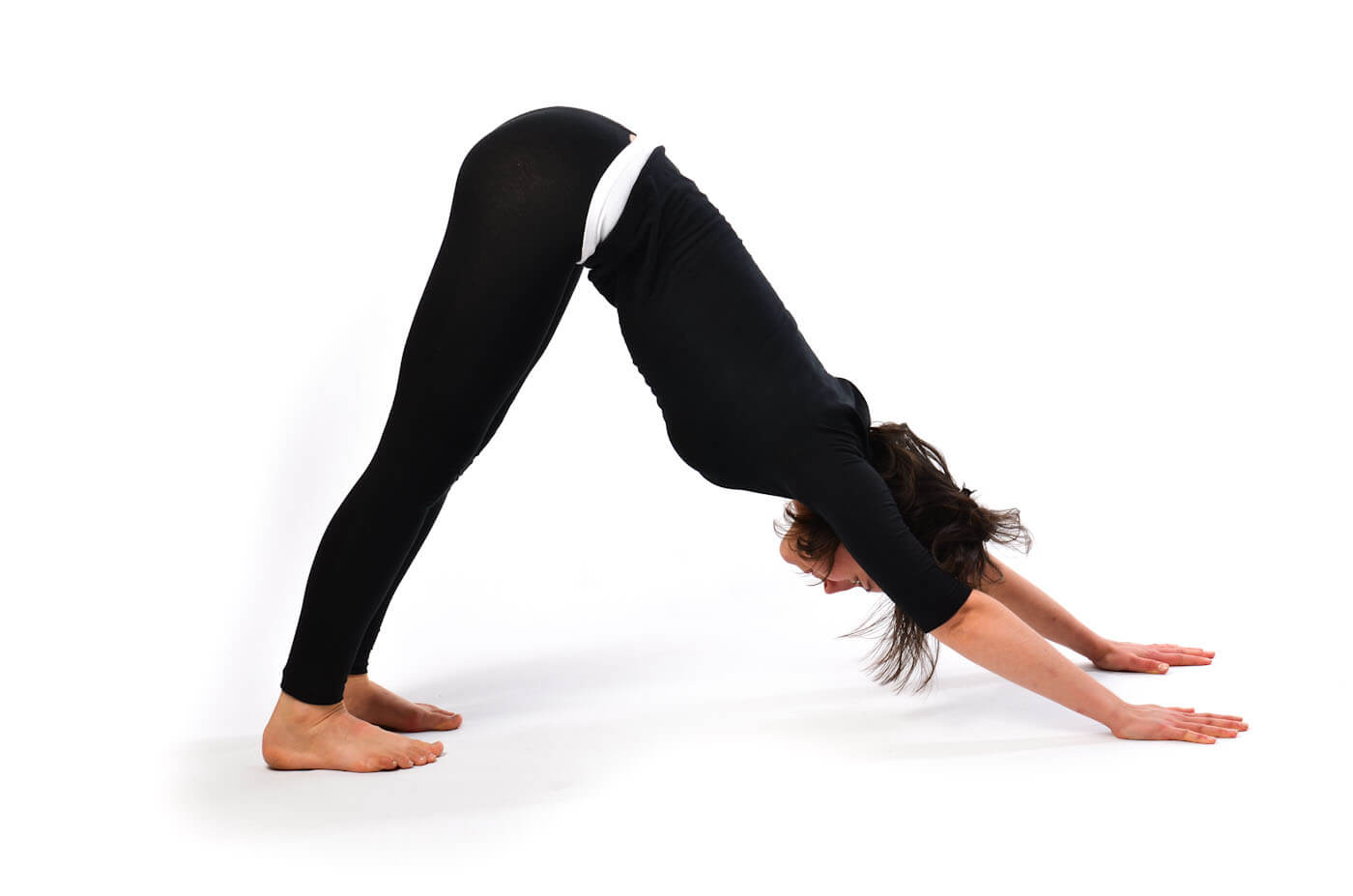
Many yoga poses put strain on the shoulders and can result in injury. Before beginning any new yoga activity, it is important you know the anatomy surrounding the shoulder joint. The three bones that make up the shoulder joint are the scapula (shoulder blade), clavicle (collar bone), and humerus (upper arm bone). Each bone has its own unique range of motion, and they all meet at an elbow joint.
The quads are responsible to knee extension. Gluteus maximus is the muscle responsible for hip abduction and hip flexion. It joins the front and rear thigh muscles. These are just four muscles that are important for yoga poses. Each of these muscles are important and it's easy to see why. As you do yoga poses, you will be able feel which one is involved in each pose.
The hamstrings play a role in knee extension. They are derived the the ischial tubesity in the pelvic. They also play a role in hip expansion. Although these muscles are crucial for all your yoga poses they can be difficult to reach without proper alignment. It will make it more difficult but it will increase your flexibility and balance. Once you are more familiar with the anatomy and workings of the hamstrings, it is safe to move on.

Yoga can also benefit the hamstrings. The hamstrings are responsible for knee extension, and they originate from the ischial tuberosity in the pelvic bowl. They are also responsible for hip flexion, and plantarflexion. Because the hamstrings control many body movements, many yoga poses require them. This allows you to find the one that is right for you.
Avoid overstretching your SI joint when doing the balancing poses. End goal is to achieve a balanced, even motion and strong core. In addition, it is important to consider the pose's alignment. Pain in the knee can result from a stretched joint. This can cause injury. You can use props to help you align more properly.
Overmobilized Capulae: Although it can give the appearance that there is a twist to it, this does not happen in this position. The position of your arm can have an impact on the spin of your spine. When the meniscus is fully relaxed, it moves to the back. A properly aligned pelvis allows the body's muscles work in the correct direction. Equal distribution of the hips and spine is important.
The pelvic joint needs to be flexed for a good range of motion at its knee joint. You should keep your pelvis and scapula in neutral. The pose may cause spinal flexion and injury if they are not. If this is the case it might be best to not attempt this pose. While the leg is fully flexed, the meniscus is pushed to the back of the joint.

The pelvis is made up of three bones called femur and thighbone. They are round and have a cup shape. The head of a femur is located in the pelvis. This is a rounded bone at the top thigh. The lower leg bones also meet in the femur. Each one of these bones is unique in its shape and angle. This can affect some yoga poses' ease and strength.
For beginners, it is important to understand the anatomy of yoga poses. As you become more familiar with your body, it will be easier to do the postures correctly. David Katz, a world-renowned specialist in yoga and anatomy, gives a detailed explanation of the anatomy basics in his book Anatomical Position. He explains the anatomy of the key yoga poses and how each one affects the body. It is easy to apply the anatomy to your everyday life once you have a good grasp of it.
FAQ
Is it true to say that protein overeating can lead to kidney stones?
Protein helps to maintain healthy bones, tissue, and skin. However, too much protein can result in calcium excretion through the urine. This can lead to kidney stone formation.
It is important to remember that not all people get kidney stones from eating more than 2g protein per kilogram (2.2lbs) of body weight. People can eat large amounts of protein and not get kidney stones.
By being careful with your sodium intake, you can prevent kidney stones. The kidneys regulate the amount of sodium they consume. Too much sodium can lead to kidney stones.
You may also want to reduce your protein intake in the event of kidney stones. Protein accounts for about half the daily caloric requirement of most adults. A reduction in protein intake will likely result in weight loss.
If you do decide to eat more protein, don't go overboard. Aim for less than 20% of total calories from protein.
What dietary supplement is best for weight loss?
Exercise and diet are key to losing weight. Some people find that certain supplementation can be helpful.
Research suggests that omega-3 fats may aid in weight loss. Omega-3s are essential fats which are crucial for brain function. They are found in fish like salmon, tuna, shrimp and cod liver oil.
Research suggests that green tea may be beneficial in weight loss. The antioxidants in green tea, catechins and other compounds may increase metabolism and promote weight loss.
Do weightlifting burn fat faster?
Weight lifting does burn fat faster, but only if you combine it with cardio workouts.
For the best results of weightlifting, do it after cardio exercises.
When done correctly, weightlifting increases your heart rate and oxygen consumption which helps you lose weight.
However, if you don't combine it with cardio you won't see any significant changes to your body composition.
How fast can I transform myself?
You must change your mindset. You must first decide to change.
Once you decide that you want to change, it is time to set a minimum of 3 months' commitment to your fitness goals.
Next, you will need to find a program that suits your lifestyle.
Realistic expectations are also important. If you're not willing to invest the time and effort required to achieve your goal, then don't buy a gym subscription.
Instead, take advantage of your free time to exercise outside.
Spend an hour walking around the block every day and you will burn enough calories to lose 1 lb each week.
Now that you have an idea of what you want, start planning how to arrange your life to follow this plan.
This includes making sure that you schedule a time to work out every morning before leaving for work and take breaks throughout the day to move.
Finally, you should reward yourself when you reach milestones. You can buy accessories and clothes that reflect your success.
Statistics
- Get free shipping and 25% off today. (healthline.com)
- Are You One of the 20% of Guys (mh.co.za)
- By John Thompson Take a whopping 38% off a set of PowerBlock Pros. (menshealth.com)
- Cardmembers earn 5% Back at Amazon.com with a Prime Credit Card. (amazon.com)
- 10 pounds in a month is likely during a lean bulking phase, especially for beginners. (muscleandstrength.com)
External Links
How To
What nutrients does a man require daily?
Healthy growth and development of men requires healthy nutrition. The body requires vitamins and minerals, protein, carbohydrates, fats (fats), water, fiber, as well other essential elements.
You also need specific nutrients for different times in the day. For example, when you sleep, your body uses energy from food to make hormones, antibodies, and enzymes. Protein is needed to build muscles and repair tissue damaged when you wake up.
Your body burns fat at night and stores it as energy as glycogen. Your body still requires sufficient nutrients and calories even though it needs less calories. You can have a snack at night if you feel hungry.
When you work out, you need adequate levels of carbs and protein to fuel your muscles. Muscle soreness can occur if you work out hard.
To avoid this, you need to eat carbs and proteins within two hours of training. To get energy from glucose, your body will start to degrade stored glycogen.
Additionally, it is important to eat protein right away after your workouts are over. This will prevent muscle tissue from being damaged while you sleep.
Your body produces lactic acid during high levels of physical activity. The body produces lactic acid when there is too much activity. This can cause fatigue. This can be avoided by eating foods high in carbohydrates like fruits and vegetables.
Carbohydrates offer your body the energy it needs for recovery from exercise.
In addition, you may want to include lean meats, fish, eggs, milk, cheese, yogurt, beans, nuts, and seeds into your diet.
These foods all contain high-quality proteins. Protein promotes muscle growth, and helps repair damaged tissues. Protein is also necessary for the production of sex hormones such as testosterone.
A healthy skin, nails and joints requires sufficient dietary fats. Healthy men require between 20% and 35% of total caloric intake from fat.
Fat can help keep your heart healthy and protect you from cancer. Your brain also functions properly thanks to fat.
You can get most of the fat you need from vegetable oils like olive oil, sunflower oil, corn oil, soybean oil, peanut oil, and safflower oil.
These oils are rich in monounsaturated essential fatty acids (MUFAs). MUFAs can lower cholesterol levels and reduce inflammation. They protect your cells from damage by free radicals.
Saturated fats (SFAs), are found mainly in animal products such as meat, milk products, and butter. SFAs can raise LDL ("bad") cholesterol levels and increase triglycerides. They promote weight gain as well as belly fat.
Plant-based oils such as vegetable oil, nuts, seeds, or grains are rich in polyunsaturated fats (PUFAs). PUFAs reduce inflammation and improve cardiovascular function. They are also good for controlling blood sugar and cholesterol.
Low HDL ("good") cholesterol is a common cause of erectile dysfunction in men. High consumption of saturated fats increases bad cholesterol, which lowers the level of good cholesterol.
Men who eat a lot of red meat or pork develop prostate problems because they contain large amounts of nitrates. When heated, nitrates are converted to nitrosamines. These compounds can lead to cancer.
Most processed meats contain nitrites and other harmful chemicals. Avoid them completely.
The American Heart Association recommends limiting red meat intake to two meals per week. Choose poultry, fish and legumes instead.